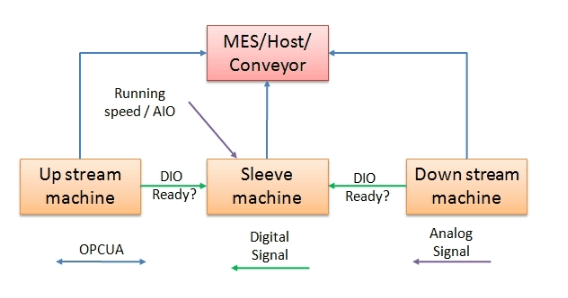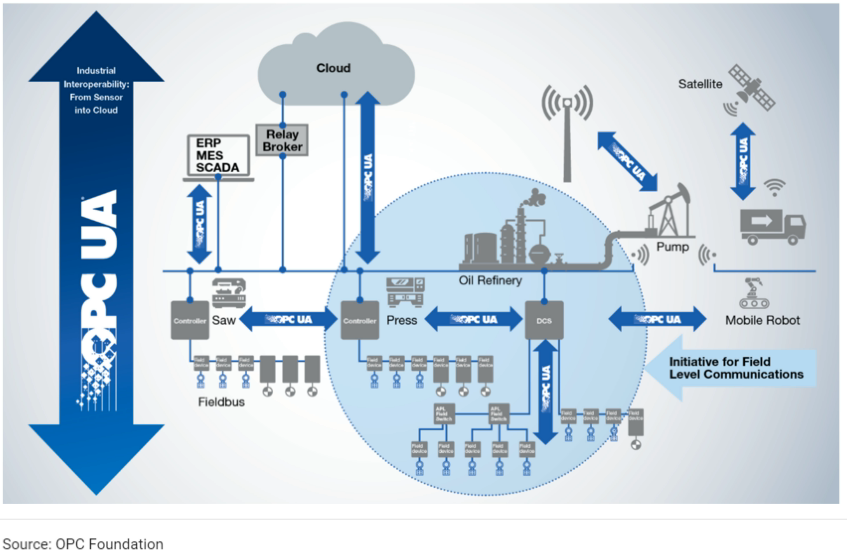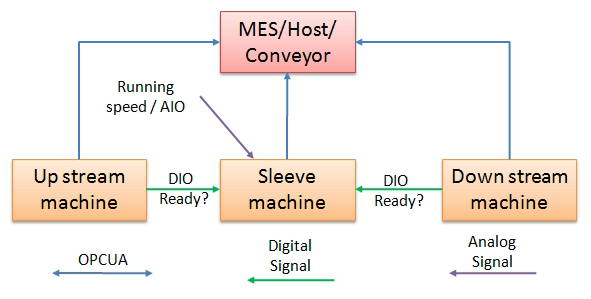
In the field of industrial intelligent automatic control, there are not only the well-known PAC, PLC (Programmable Logic Controller), PC Base controller, DDC(Direct Digital Control, DDC) and other control equipment, as well as small HMI (Human-Machine Interface) or large SCADA (Supervisory Control And Data Acquisition) Industrial software needs to operate on different types of industrial controllers and network systems.To process automation, when you want to transmit all the process data in the DCS (Distributed Control System) to the upper-layer MES(Manufacturing Execution System) production process and ERP(Enterprise resource planning) enterprise resource management system, you must also develop specific communication interface applications according to each supplier's machine model. In order to achieve data integration, assist corporate decision-making and improve efficiency, this seems out practical. OPCUA, which stands for OPC(Open Platform Communications) Unified Architecture, is a communication protocol that plays a vital role in industrial automation. It provides a standardized and secure way for different devices and systems to communicate with each other seamlessly. OPCUA is designed to enable interoperability and data exchange between various components in an industrial environment, such as sensors, actuators, PLCs, and SCADA systems.
With OPCUA, industrial automation professionals can easily integrate disparate systems and devices, regardless of the manufacturer or communication protocol they use. This allows for a more flexible and scalable automation infrastructure, reducing the complexity and cost associated with system integration.
Moreover, OPCUA offers advanced security features, including authentication, encryption, and access control, ensuring the confidentiality and integrity of industrial data. This makes OPCUA a reliable and secure solution for industrial automation applications, where data privacy and protection are of utmost importance. Most importtant of all, OPCUA is the basis of industry 4.0 to get raw data for big data analysis.

There are several advantages of utilizing OPCUA in industrial automation. First and foremost, OPCUA provides platform independence, allowing automation professionals to develop applications that can run on different operating systems and hardware platforms. This eliminates the need for device-specific software, simplifying the development and maintenance process.
Furthermore, OPCUA offers a high level of flexibility and scalability. It supports both point-to-point and publish-subscribe communication models, enabling real-time data exchange between multiple devices and systems. This flexibility allows for the seamless integration of new devices or systems into existing automation infrastructures, without disrupting the overall operation.
Another advantage of OPCUA is its support for a wide range of data types, including not only digital and analog signals but also complex data structures. This enables the transmission of rich and meaningful information between devices, facilitating advanced analytics and decision-making in industrial automation.
Additionally, OPCUA provides built-in diagnostics and error handling mechanisms, making it easier to troubleshoot and debug communication issues. This reduces downtime and improves the overall reliability of industrial automation systems.
Overall, OPCUA offers significant advantages in terms of interoperability, security, flexibility, and scalability, making it a powerful tool for enhancing industrial automation.
One of the key applications of OPCUA in industrial automation is the integration of inline production control signals. By utilizing OPCUA, it becomes possible to establish a seamless connection between the production control system and various production line devices, such as sensors, actuators, and PLCs.
With OPCUA, real-time production data, such as temperature, pressure, and speed, can be easily transmitted and monitored. This enables operators to have a clear overview of the production process and make informed decisions to optimize efficiency and quality.
Moreover, OPCUA allows for bi-directional communication, enabling the production control system to send control commands to the devices on the production line. This enables real-time adjustments and interventions, ensuring that the production process remains within the desired parameters.
By integrating OPCUA for inline production control signals, industrial automation can achieve enhanced control, monitoring, and optimization, leading to improved productivity and reduced downtime.
Digital IO, also known as Digital Input / Output, plays a crucial role in industrial automation as it allows for the interaction between the digital world and physical devices. When combined with OPCUA, digital IO can greatly enhance industrial automation capabilities.
With OPCUA and digital IO, it becomes possible to monitor and control digital signals in real-time. This includes signals from sensors, switches, and other digital devices. By integrating OPCUA and digital IO, operators can easily access and analyze the status of these digital signals, enabling them to make informed decisions and take appropriate actions.
Furthermore, OPCUA provides a standardized and secure communication protocol for digital IO devices, ensuring seamless interoperability and data exchange. This eliminates the need for proprietary protocols or custom interfaces, simplifying the integration process and reducing compatibility issues.
In addition, OPCUA allows for easy configuration and parameterization of digital IO devices, making it easier to adapt to changing automation requirements. This flexibility enables industrial automation systems to quickly and efficiently respond to evolving production demands.
By leveraging the power of OPCUA and digital IO, industrial automation can achieve improved control, monitoring, and flexibility, enhancing overall operational efficiency.
Dase-Sing uses digital input to communicate with up upstream/downstream equipment for ready status and response to host for upstream/downstream equipment status.
Analog IO, or Analog Input / Output, is essential for industrial automation as it enables the measurement and control of continuous signals, such as temperature, pressure, and flow rate. When combined with OPCUA, analog IO can unlock new possibilities in industrial automation.
By utilizing OPCUA for analog IO, industrial automation systems can easily collect and transmit real-time analog data from sensors and other analog devices. This data can then be analyzed and visualized, providing valuable insights into the production process and enabling proactive decision-making.
Moreover, OPCUA ensures the integrity and accuracy of analog data by providing mechanisms for data validation and error handling. This ensures that the collected analog data is reliable and can be trusted for critical automation tasks.
Additionally, OPCUA enables the seamless integration of analog IO devices from different manufacturers into a unified automation infrastructure. This eliminates compatibility issues and allows for the efficient utilization of existing analog IO devices.
By harnessing the power of OPCUA and analog IO, industrial automation can achieve enhanced monitoring, control, and optimization of continuous signals, resulting in improved product quality and operational efficiency.
Clients (Sleeve machine, Filling System...) usually send out data (machine status, production log...) via OPCUA. Each machine confirms upstream and downstream status to start production and set speed via digital/analog signal. It is safe and simple in common practice.
The following is simple case for data transfer and digital/analog signal connection. If you need more system integration consideration, welcome to contact Dase-Sing.

Dase-Sing customer service team accumulated over 30 years' experience and can support customers fast and throughly. If you need more information about real practice, welcome to contact us.
Constct us:
matt@dasesing.com